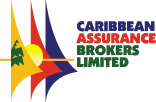
CARIBBEAN ASSURANCE Brokers Limited (CAB) was incorporated on June 13, 2005, and began operations on November 1, 2005, as a retail and facultative placement broker for life, health and personal accident insurance. In 2006, the company had its registration amended to include marketing and placement of its International Comprehensive Health Insurance Programme (ICHIP), which is now insured 100 per cent by certain underwriters at Lloyd’s of London. The amendment also included general insurance business, namely property and business interruption, miscellaneous accident lines, liabilities, marine and aviation and motor vehicles.
With 11 employees at inception, CAB now boasts a staff complement of 108. The company has the largest international health insurance portfolio in Jamaica (ICHIP), as well as one of the largest broker-managed employee benefits portfolios (consistently ranking in the top three producing brokers for employee benefits and individual life insurance for Sagicor Life and Guardian Life). Its general insurance business continues to show remarkable and consistent growth, especially as it relates to its corporate and commercial lines.
Today, its combined team of dedicated professionals has over 400 years of experience in the insurance industry and has been trained to provide clients with the specialised services necessary to effectively and efficiently manage their portfolios of international health, life and travel insurance, employee benefits, local individual insurance, credit union Gold Series and general insurance programmes and the associated cost regimes at no extra cost to their clients. Specifically, its international health insurance, employee benefits, and general insurance teams comprise qualified insurance practitioners with expertise in risk-management solutions and claims administration. Having formed solid strategic alliances and partnerships with international broking operations and insurance providers in Britain and the United States (US), CAB provides access to all major world insurance and reinsurance markets.
CAB’s primary global partners are its correspondent London brokers, which, for the most part, are independent specialist Lloyd’s brokers based in the heart of London’s insurance sector trading with all of the major international insurance and reinsurance markets; its international health insurance partners, Lloyd’s of London, which has a reputation of excellence and leadership in the international medical insurance markets; and AETNA, one of the leading diversified healthcare benefits companies in the US. The commitment of the company to its customers is to consistently delight them by delivering the highest-quality service and the best value for money. CAB are cognizant of the fact that its clients have choices and, as such, the organisation must be guided by the principles of not merely satisfying but, indeed, delighting customers with first-class customer care. The team members, at all levels, are committed to this philosophy and are constantly striving for excellence.
With a philosophy of “The Team is the Theme’, decision-making throughout the organisation is based on consensus and the input of stakeholders. Through their consistent achievements and its regional thrust, the company has begun to realise its vision ‘to become the BEST insurance brokerage house in the English-speaking Caribbean by investing in their human capital; to seek out strategic alliances; to maintain the highest level of professionalism, integrity and competence; and to successfully meet the challenges of the changing insurance industry by being knowledgeable, prepared, solution-oriented and customer-focused’.
Coupled with its mission ‘to consistently delight their customers at each point of contact with the brand and to provide a rewarding environment for their employees’, CAB has embarked on a path to build loyalty and trust among its clients and employees.
One such delight is its recently introduced, innovative Caribbean Assurance Brokers Loyalty Programme, which was designed to reward customers by providing incredible savings from discounts given by its over 200 participating merchants and healthcare providers islandwide (including automobile dealers, hotels, restaurants, doctors, pharmacies, hospitals, medical labs, spas, salons, gyms and more! ), in addition to a partnership with Brawta Living through which customers obtain a further five per cent discount on all deals.
In June 2006, CAB’s Social Club Committee, geared towards developing future leaders, decided that part of its mandate would be to give back to the community in a very real way because it felt that as anew company, CAB needed to not only do well but also do good. It was felt that any contribution that CAB made towards national development would not only give great personal satisfaction to the staff but also generate a very positive response in the community in which it operated. Its staff decided that their contribution would be to the development of young minds, and so the Reddie’s Place of Safety, which has been a haven to orphans, as well as abandoned and abused youngsters, was chosen.

From left: Shenneil Edwards, manager, International Insurance Division, Caribbean Assurance Brokers Limited (CAB); Kim Brumet, strategic accounts manager, Seven Corners; Dale Willetts, executive VP, London Market Insurance; Raymond Walker, founder, chairman and CEO, CAB; and Natalie St Louis, strategic corporate consultant, CAB, and CEO, Strategic Konnections, at the recently held International Comprehensive Health Insurance Programme Symposium at the Knutsford Court Hotel.
CONTINUED PROGRAMME
The programme, which began in July 2006 and continues to this date, involves the provision of groceries to the home each month, along with several interactions with the children during the Easter and Christmas periods and doctor’s visits by CAB shareholder and former director, Dr Karen Rajpat. The children have become an integral part of the CAB team they actively participate in church services and have been on numerous field trips and other interactive activities with the staff.
CAB remains committed to the children of the Reddie’s Place of Safety as it believes that the success of Jamaica lies with the development of the hearts and minds of the nation’s youths.
The company has also demonstrated its innovativeness by saving on energy and ‘going green’ through generating its own energy and initiating other projects that have resulted in tremendous cost reduction and the protection of the environment.
From all that has been stated, itis without any doubt that this company will always stand out and be known and seen as the pioneer and innovator in the insurance sector.
There are many exciting things on the horizon that will take the company to the next level in the industry.
For more information, please call 876-619-1351 or visit www. cabjm.com today.
Learn the basics of Insurance
Insurance works by pooling risk. What does this mean? It simply means that a large group of people who want to insure against a particular loss pay premiums into what we will call the insurance bucket, or pool. Because the number of insured individuals is so large, insurance companies can use statistical analysis to project what their actual losses will be within the given class. They know that not all insured individuals will suffer losses at the same time or at all. This allows the insurance companies to operate profitably and, at the same time, pay for claims that may arise. For instance, most people have auto insurance, but only a few ever actually get into an accident. You pay for the probability of the loss and for the assurance that you will be paid for losses in the event they occur.
RISKS
Life is full of risks. Some are preventable or can at least be minimised, some are avoidable, and some are completely unforeseeable. What’s important to know about risk when thinking about insurance is the type of risk, the effect of that risk, the cost of the risk, and what you can do to mitigate the risk. Let’s take the example of driving a car.
Type of risk: Bodily injury, total loss of vehicle, having to fix your car.
The effect: Spending time in the hospital, having to rent a car, and having to make car payments for a car that no longer exists.
The costs: Can range from small to very large.
Mitigating risk: Not driving at all (risk avoidance), becoming a safe driver (you still have to contend with other drivers), or transferring the risk to someone else (insurance). Let’s explore this concept of risk- management (or mitigation) principles a little deeper and look at how you may apply them. The basic risk-management tools indicate that risks that could bring financial losses and whose severity cannot be reduced should be transferred. You should also consider the relationship between the cost of risk transfer and the value of transferring that risk.
RISK CONTROL
There are two ways that risks can be controlled. You can avoid the risk altogether, or you can choose to reduce it.
RISK FINANCING
If you decide to retain your risk exposure, then you can either transfer that risk (i.e. , to an insurance company) or retain that risk either voluntarily (ie. you identify and accept the risk) or involuntarily (you identify the risk, but no insurance is available).
RISK SHARING
Finally, you may also decide to share the risk. For example, a business owner may decide that while he is willing to assume the risk of a new venture, he may want to share the risk with other owners by incorporating his business. For risks that involve a high severity of loss and a low frequency of loss, then risk transference (i.e., insurance) is probably the most appropriate protection technique. Insurance is appropriate if the loss will cause you or your loved ones a significant financial loss or inconvenience. Do keep in mind that in some instances, you are required to purchase insurance (such as if you are operating a motor vehicle). For risks that are of low loss severity but high loss frequency, the most suitable method is either retention or reduction because the cost to transfer (or insure) the risk might be costly. In other words, some damages are so inexpensive that it’s worth taking the risk of having to pay for them yourself rather than forking extra money over to the insurance company each month.
THE RISK MANAGEMENT PROCESS
After you have determined that you would like to insure against a loss, the next step is to seek out insurance coverage. You may have many options available to you, but it’s always best to shop around. You can go directly to the insurer through an agent, who can bind the policy. The process of binding a policy is simply a written acknowledgement identifying the main components of your insurance contract. It is intended to provide temporary insurance protection to the consumer pending a formal policy being issued by the insurance company.
